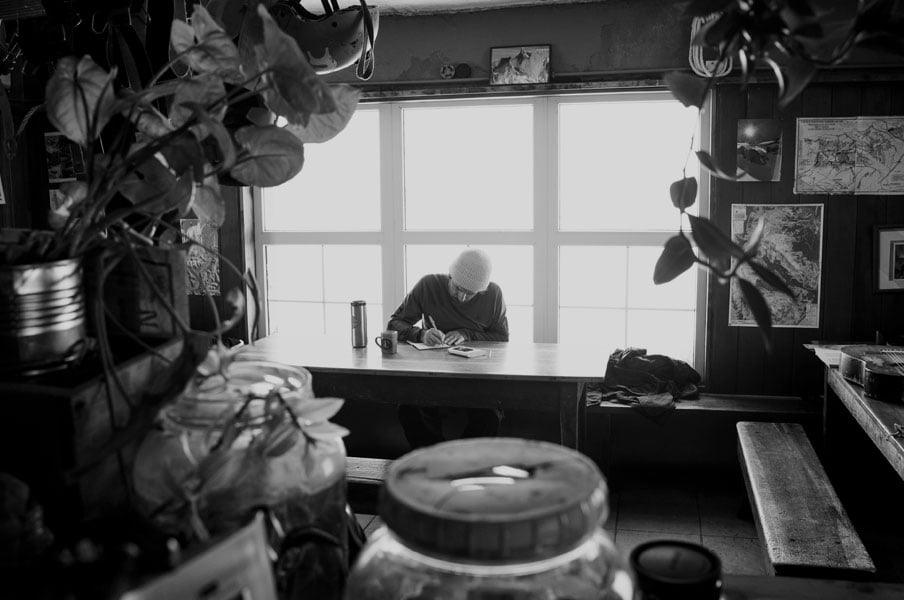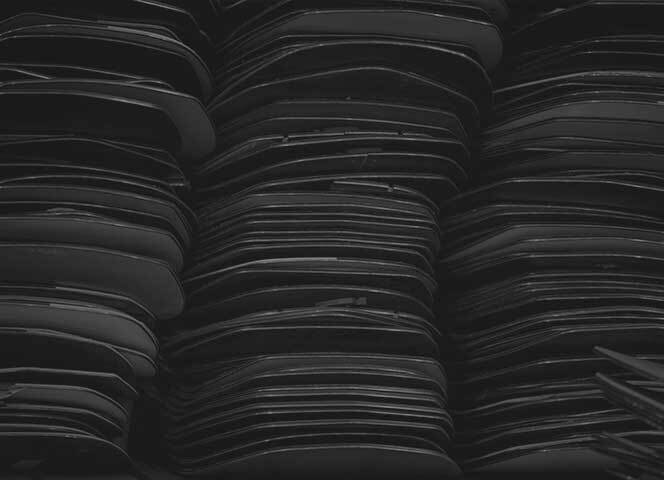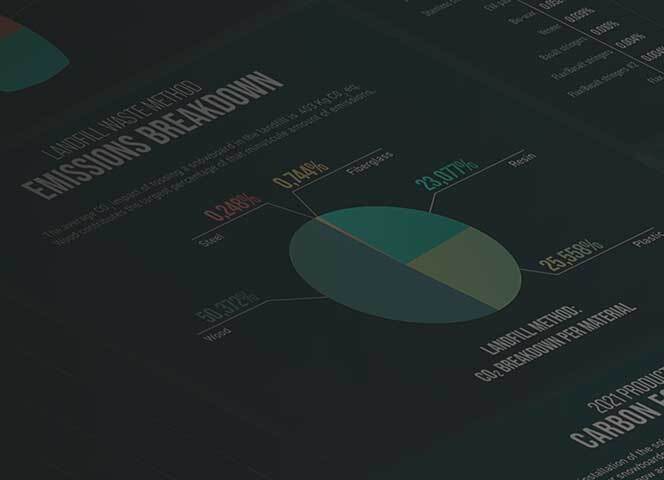How green is your board?
footprint of a Jones board.
Materials and assembly
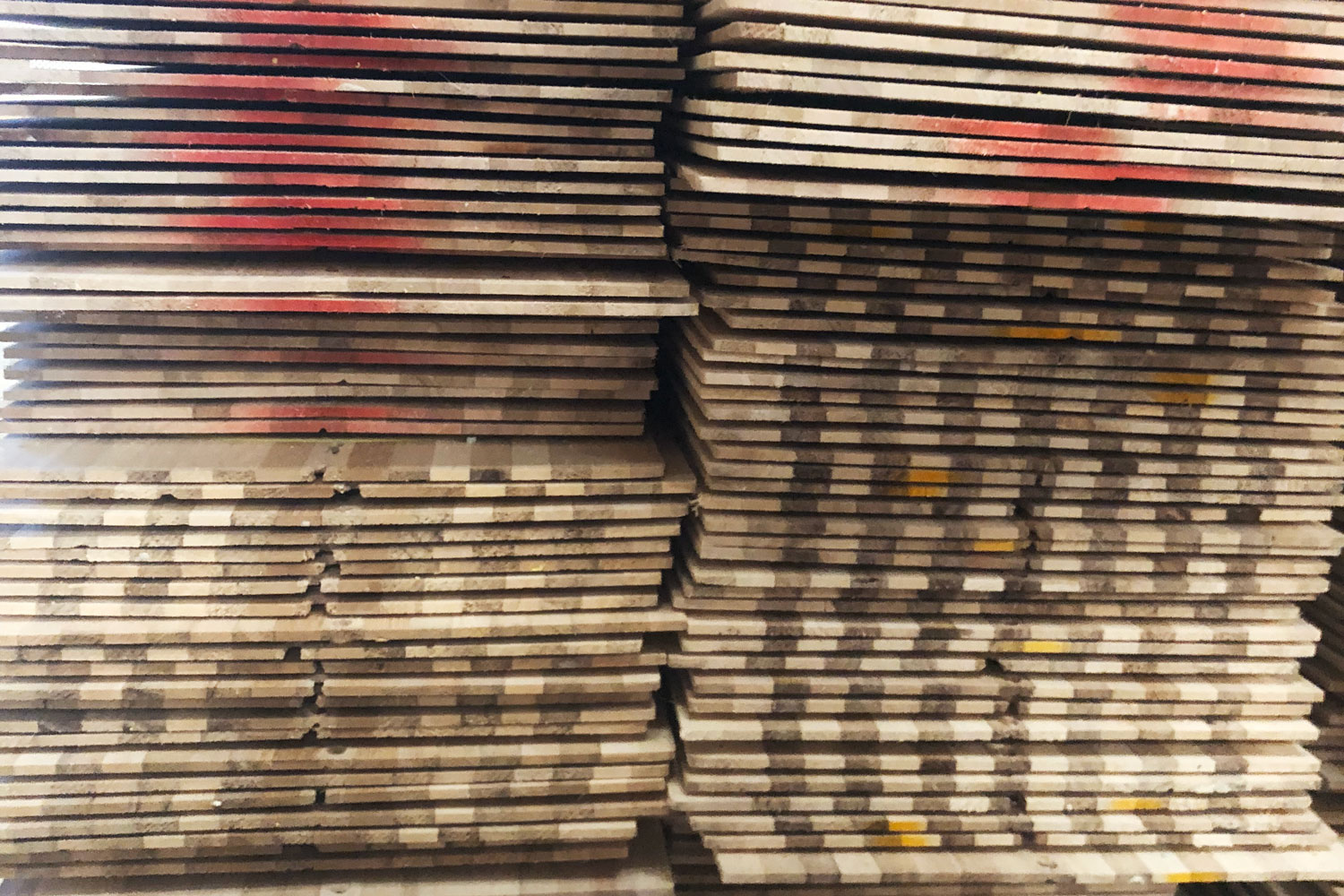
What is the environmental cost of making a snowboard?
It’s a question that has been central to our brand ethos since the foundation of Jones.
From the first day we started making snowboards we have been concerned with how their production affects the planet. And while it’s been a decade long challenge to fully quantify the environmental impact of a Jones board, we’ve been focused on making our boards more sustainable every season.
2020 was by far our most successful year ever in terms of both improving the sustainability of our snowboards and understanding their environmental impact. Our factory’s move to 100% solar power in May 2020 played a huge role in these sustainability improvements. You can learn all about our switch to solar power in part one of this blog series.
Around this same time, we also began an in-depth analysis of the complete life cycle of a Jones board, including every stage of its production and distribution. The goal of this analysis, known as a product Life Cycle Assessment (LCA), was to calculate the approximate carbon footprint of every snowboard and splitboard model we sell. This LCA project was led by Ecochain, a Dutch environmental company that is one of the global leaders in assessing companies’ environmental impact.
After a year of gathering data and crunching the numbers, we are thrilled to now share the results of Ecochain’s comprehensive analysis of our snowboards. There is so much information to share that we’ve split up the LCA findings into five posts.
This third chapter of the blog series explains how materials and assembly affect the sustainability of a given board model.
How do we choose materials? Eco-performance.
Between the 41 snowboard and splitboard models in our 2021 line, we use nearly 60 different materials. Some materials, like recycled edges and sidewalls, are found on every model we make. A few materials, like the Carbon/Innegra reinforcement, are featured on only two specific models: the Airheart and Storm Wolf.
Materials largely define a snowboard model’s intended performance. Jones’ Surf Series models are designed for playful slashing so they are made with softer wood cores and lighter weight fiberglass. And our Ultra Series models, which are built for high speed performance, are made with stiffer cores and our most advanced dampening materials.
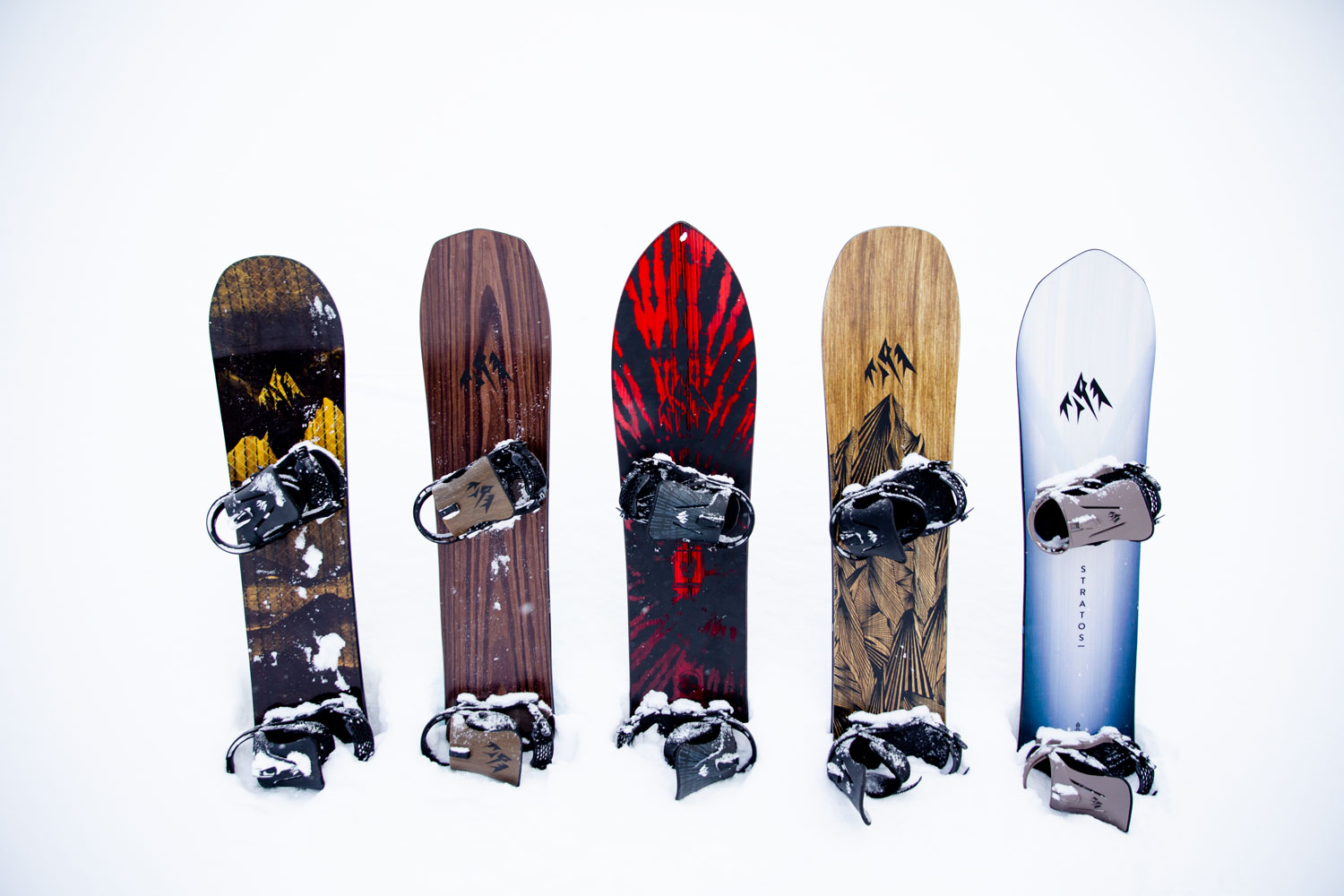
We choose which materials to use for each model based on our Eco-Performance design philosophy. This design philosophy seeks to balance performance, durability and sustainability. We test all new materials against these criteria and strive to use the most sustainable materials possible without sacrificing board performance or durability. We must value performance because we trust our lives to these boards, and durability is a critical aspect of snowboard sustainability. The longer a board lasts, the fewer boards you need to buy and later dispose of.
This process of testing and adopting sustainable materials whenever possible began with our decision to use only recycled steel edges and recycled ABS sidewalls in our first board line. Testing proved that the recycled materials performed the exact same as the non-recycled versions so the decision was a no-brainer. Not every material choice has been this straightforward, however.
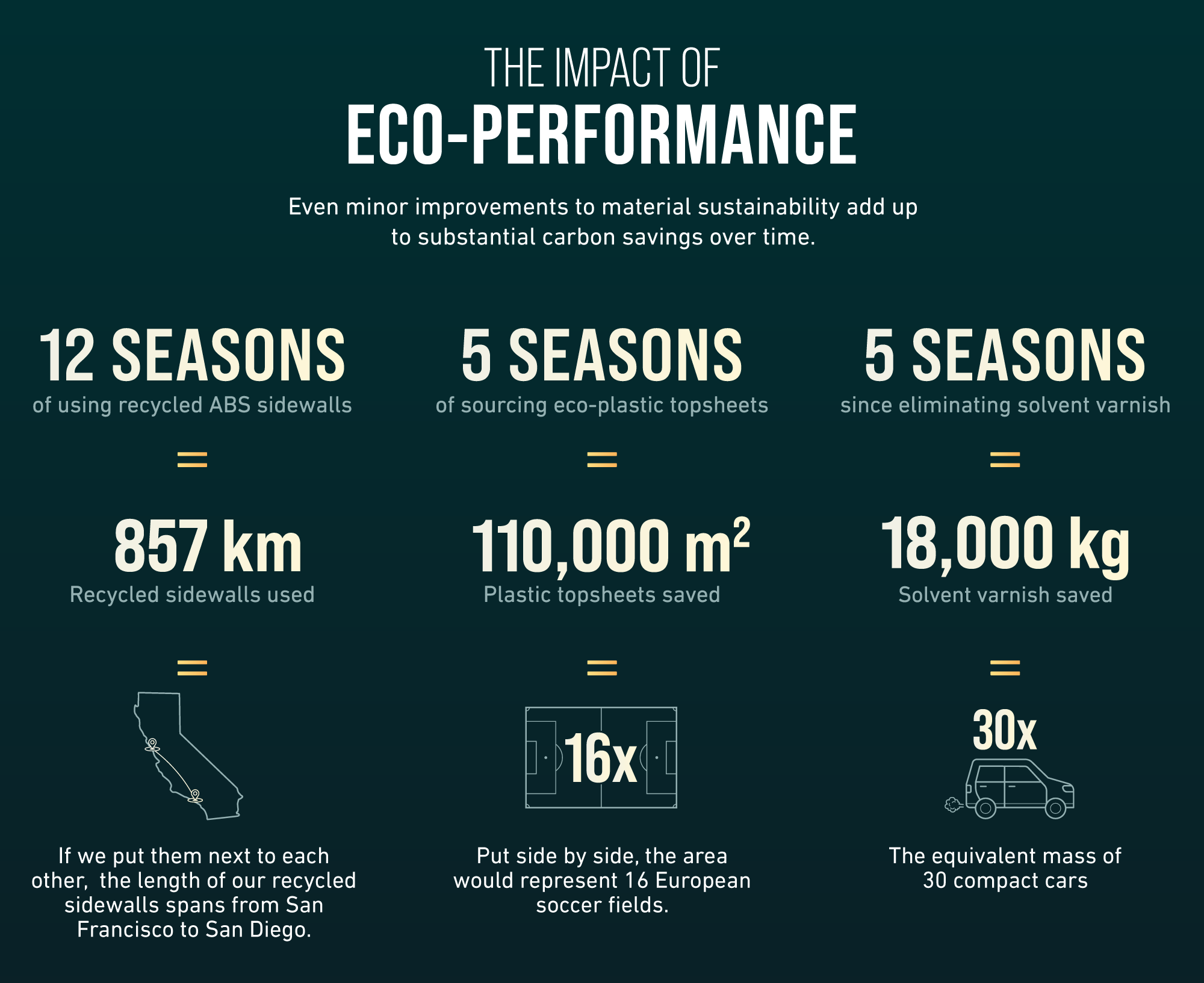

Many of our boards feature wood veneer topsheets, including the Flagship and Hovercraft. We love the eco-performance and board feel of wood veneer topsheets, but synthetic topsheets can have a great board feel too, and they are more durable. It took us several years to find a high performance sustainable replacement for petroleum-based plastic topsheets. After testing several options, we switched to eco-plastic topsheets made from castor beans in 2016. The Surf Series, Solution and many other models now feature an eco-plastic topsheet that is just as durable as a standard plastic topsheet, but has a much smaller carbon footprint.
Our commitment to using only sustainable topsheet materials like eco-plastic, flax fiber and wood veneer completely eliminated our need to use solvent varnish, a toxic petro-chemical traditionally used as a glossy clear coat. Ditching varnish was not only a huge carbon emissions savings, but it also meant that no factory worker had to work with this known carcinogen to build our boards. Win-win successes like this keep us pushing as hard as we can toward developing new sustainable manufacturing solutions. The positive results of moving the sustainability needle even a fraction always add up.
How do materials affect sustainability?
To understand how each material affected the overall sustainability of a given board model, we calculated the percentage of CO2 emissions that a material contributed to a board’s carbon footprint. This table details what we found:
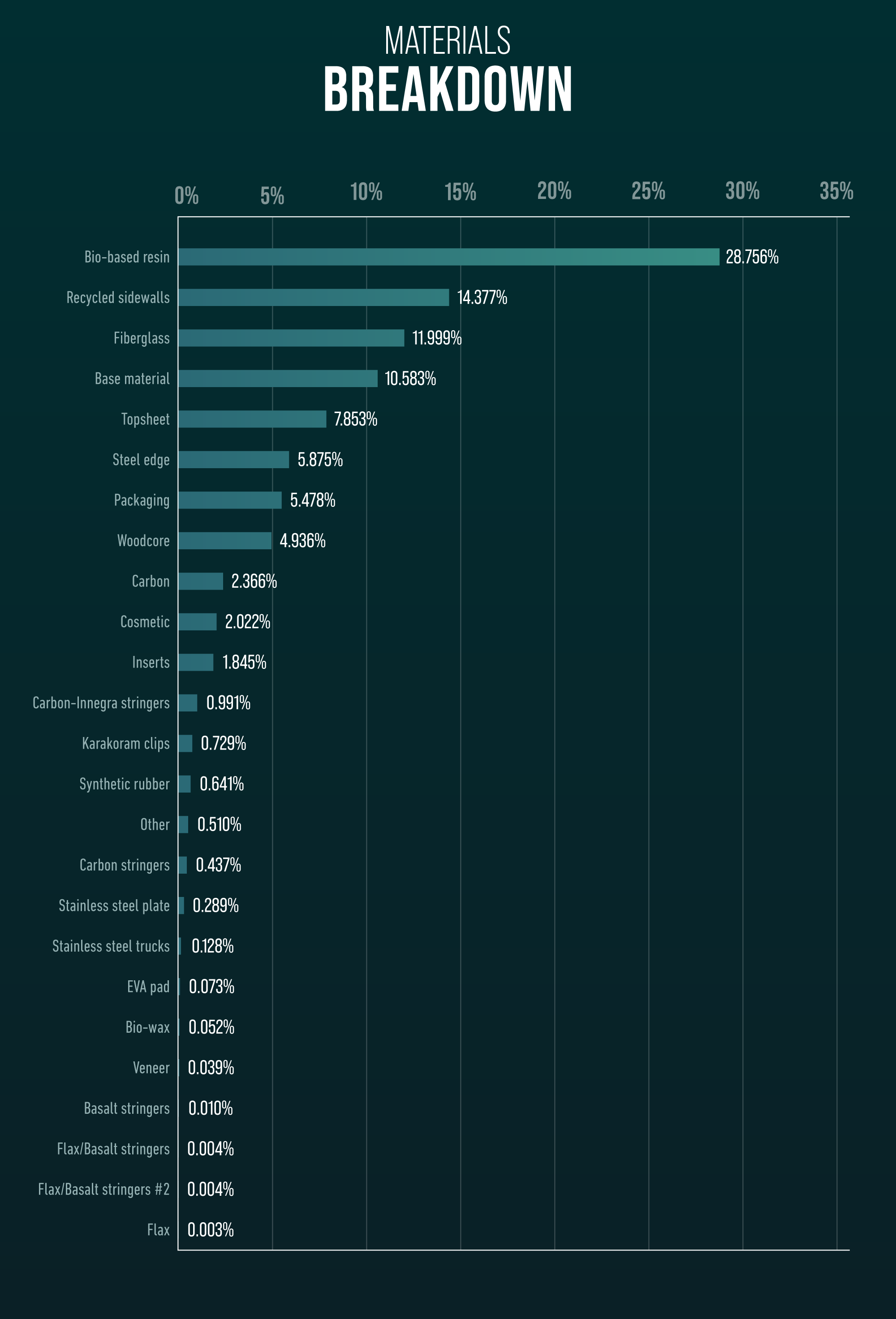
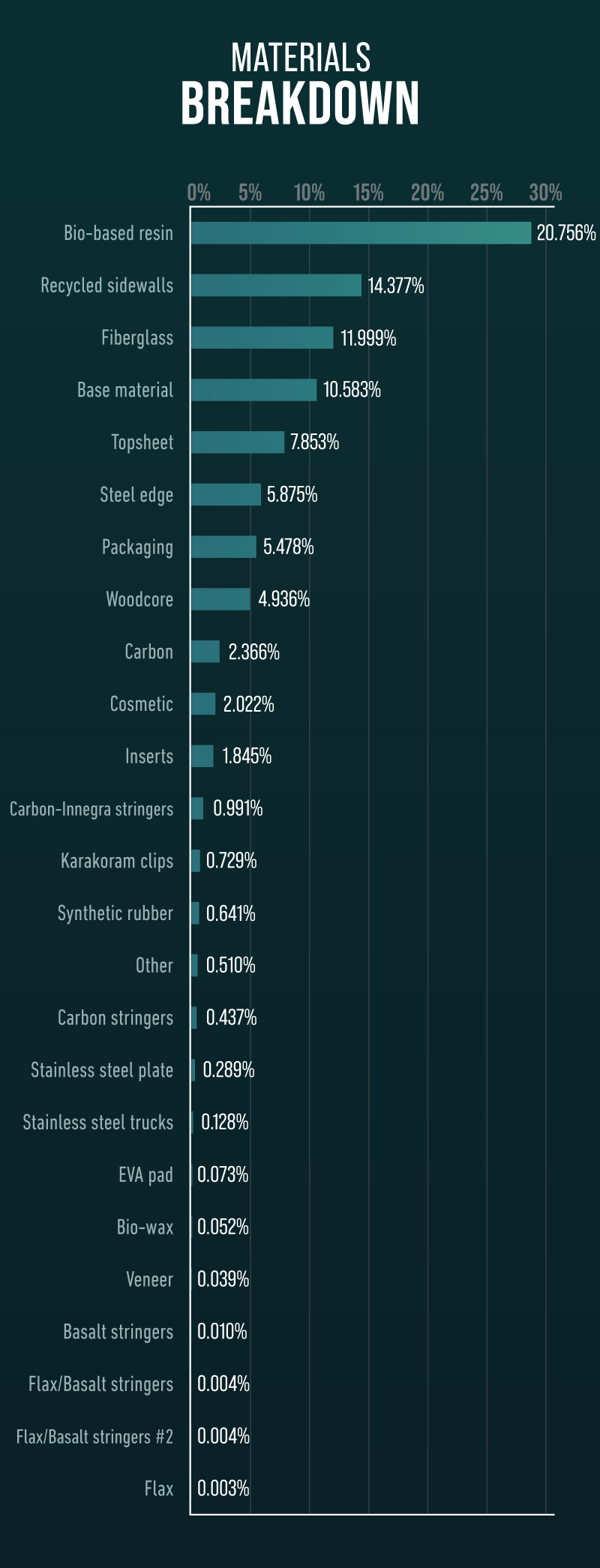
The data clearly shows that epoxy resin, sidewalls, fiberglass and base materials have the biggest impact on a snowboard’s sustainability. Seeing the top two carbon culprits - epoxy and sidewalls - confirms how important it is that we use only bio-based epoxy resin and recycled sidewalls in all our boards.
We push to improve the sustainability of all the materials in a board because materials account for a vast majority of a snowboard’s overall carbon footprint. Producing all the raw materials we need each season emits 66% of our overall annual CO2 footprint. Bio-based epoxy resin is responsible for 29% of that total.
Looking at the carbon footprint of the materials in just one board, we found that the average Jones solid board uses 15,5kg CO2 eq. in materials. The average Jones splitboard uses 19kg CO2 eq. in materials. The difference between solids and splitboards is due to the extra edges, sidewalls and hardware.
C02 eq. impact of materials
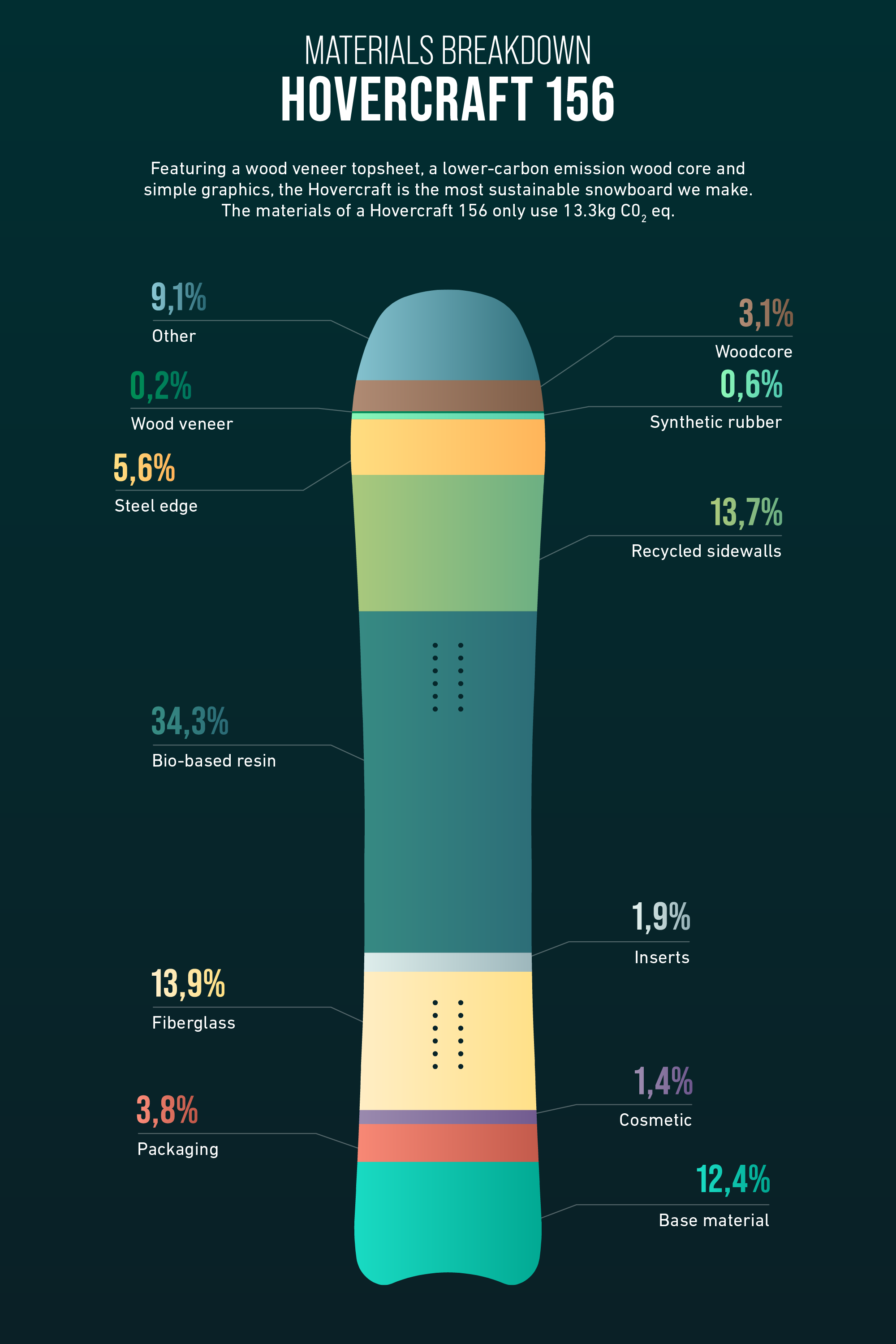
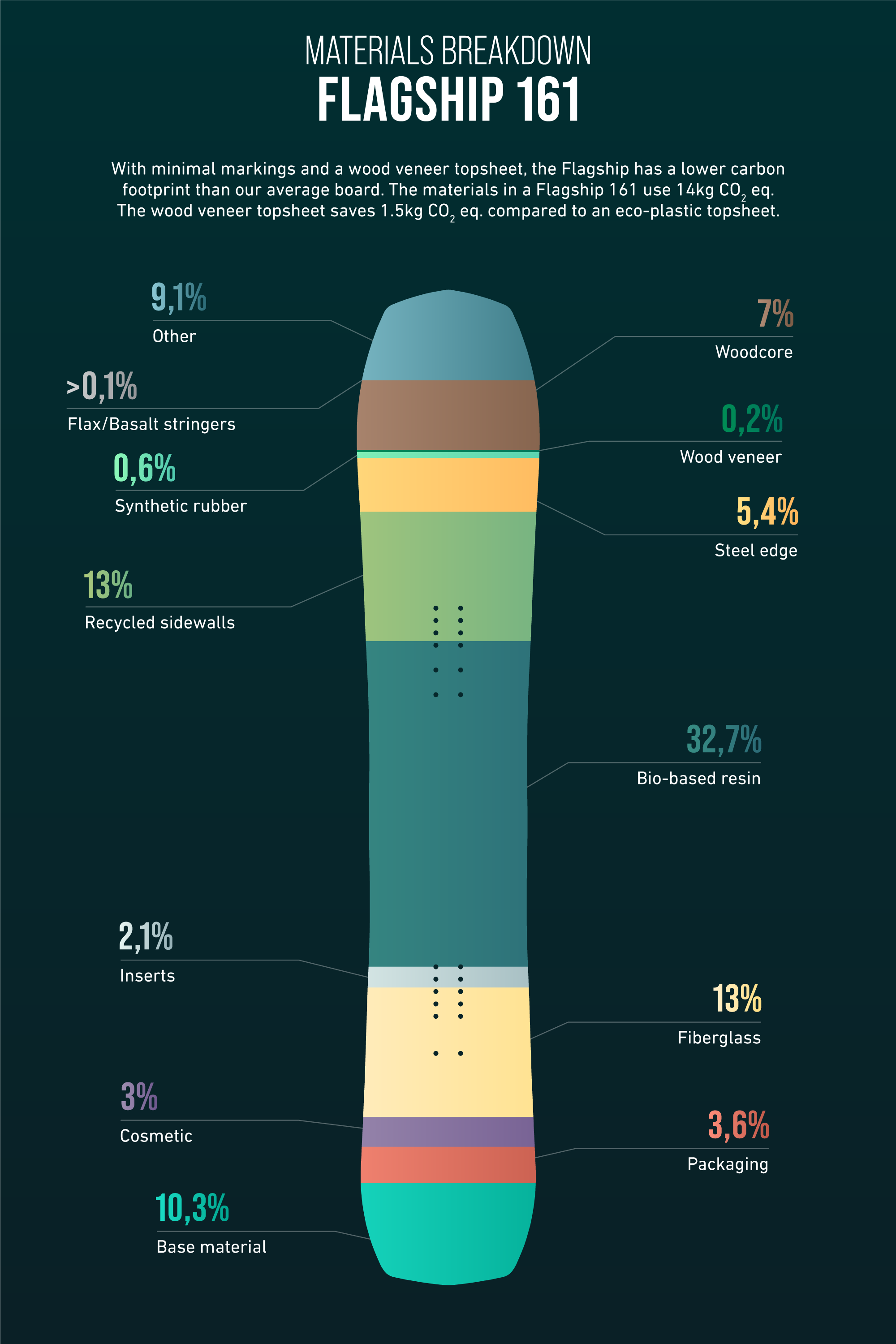
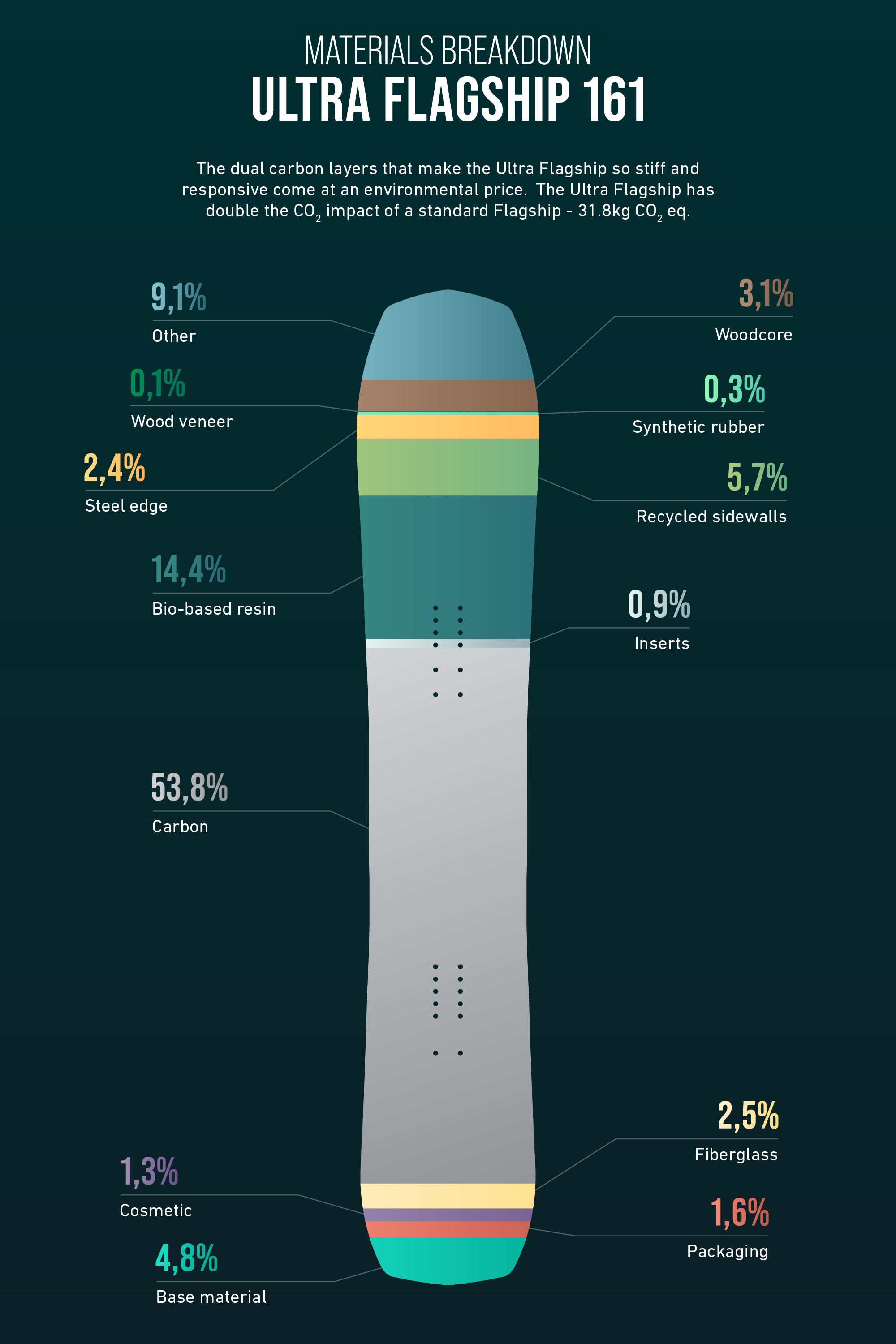
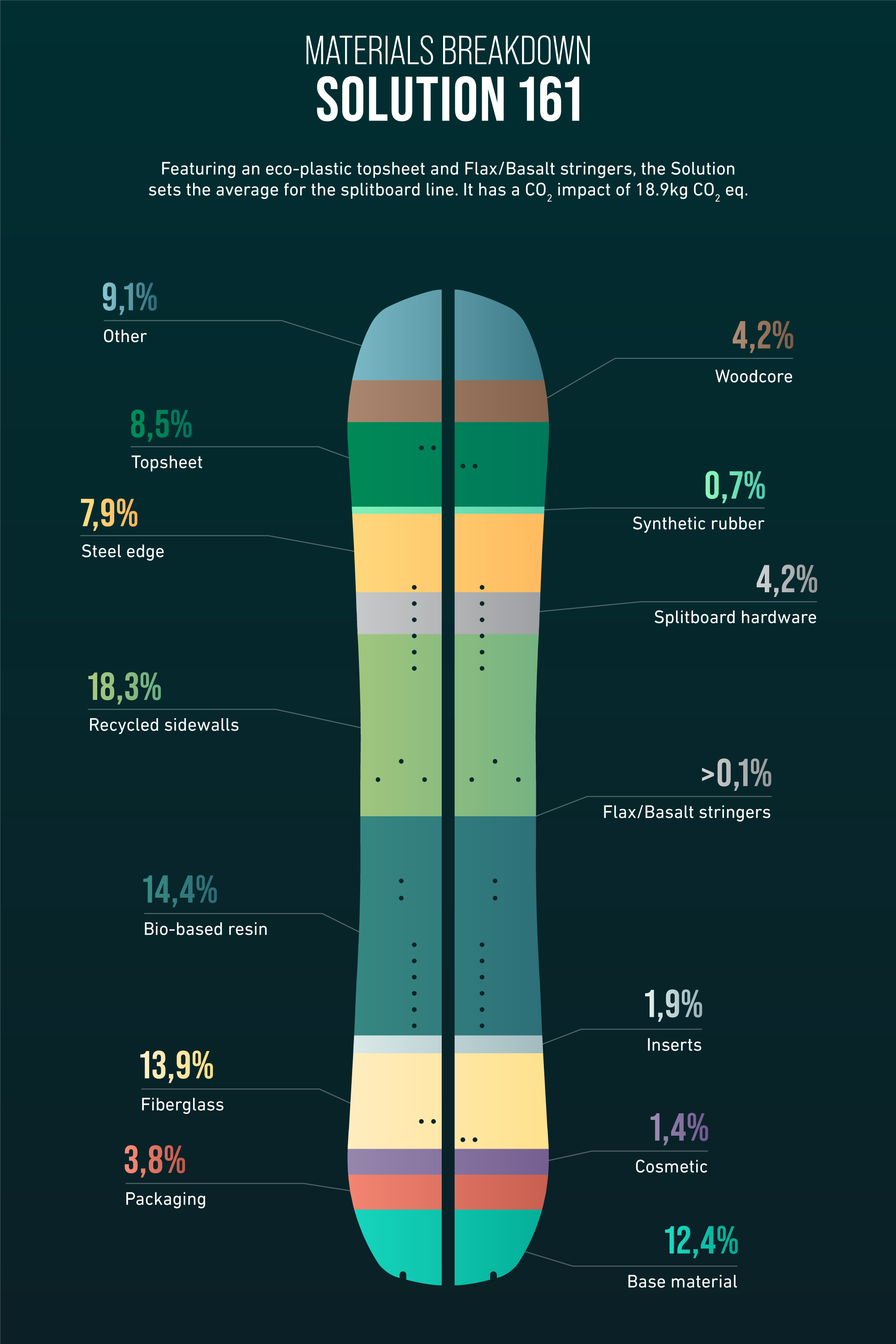
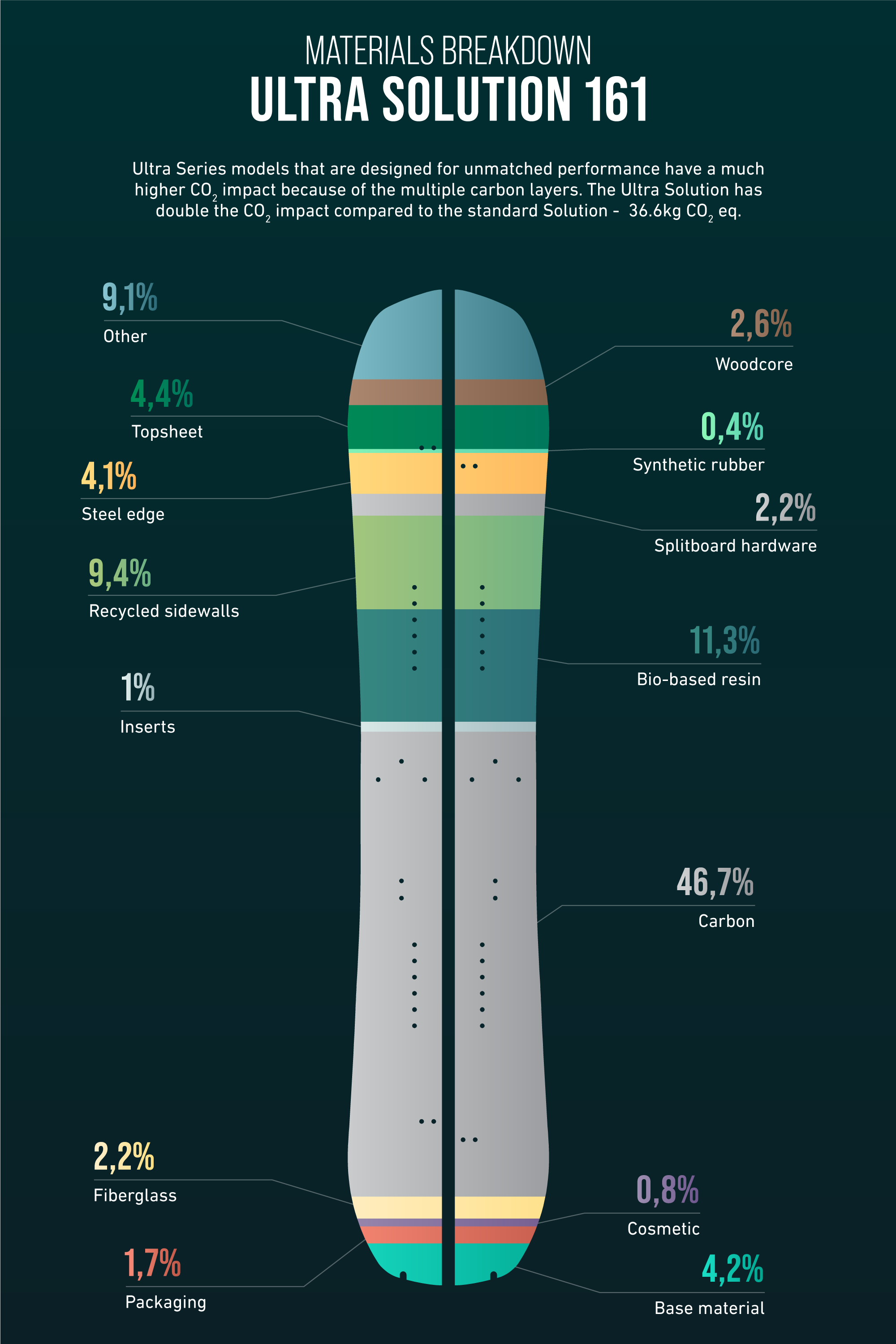
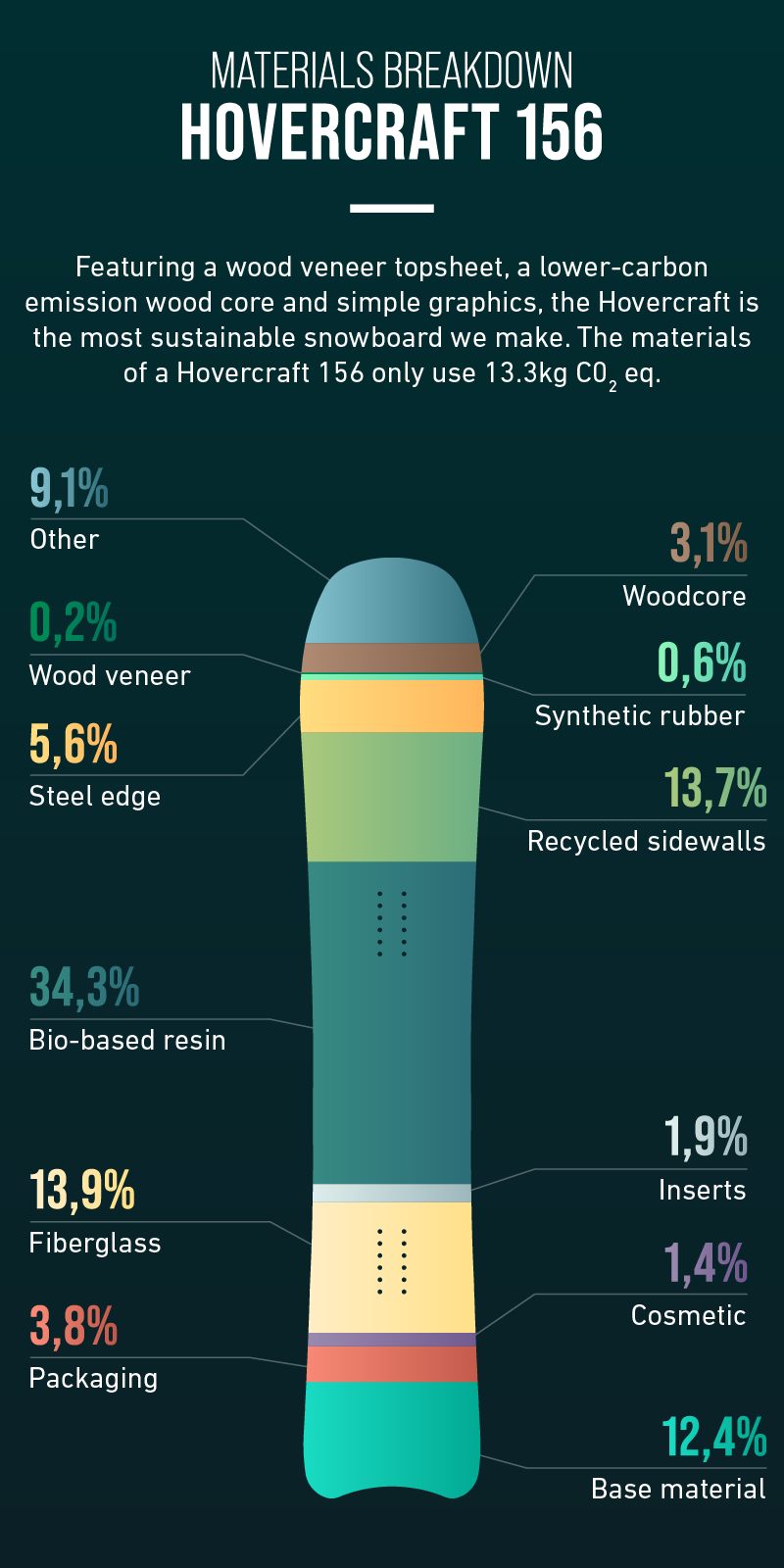
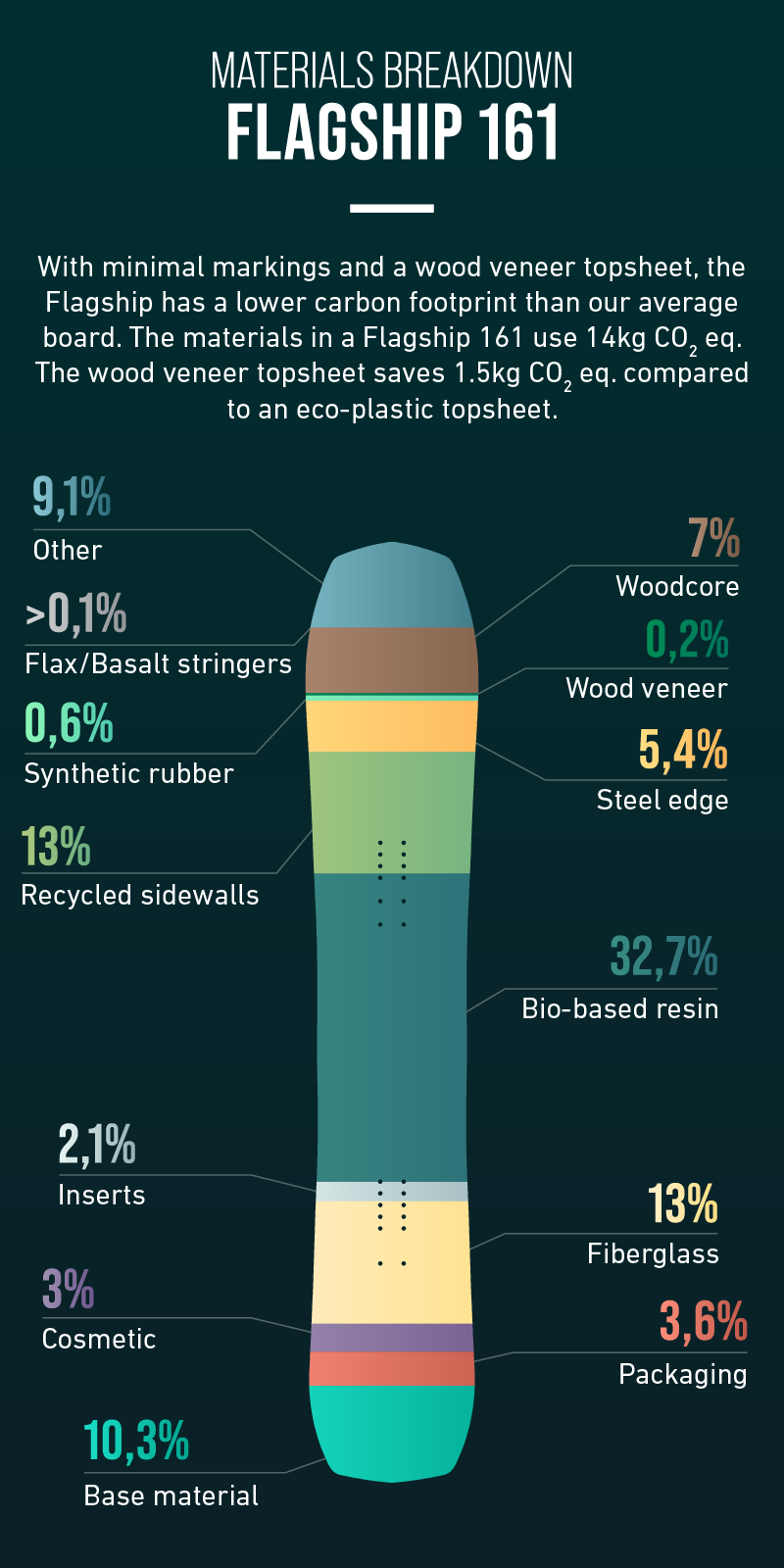
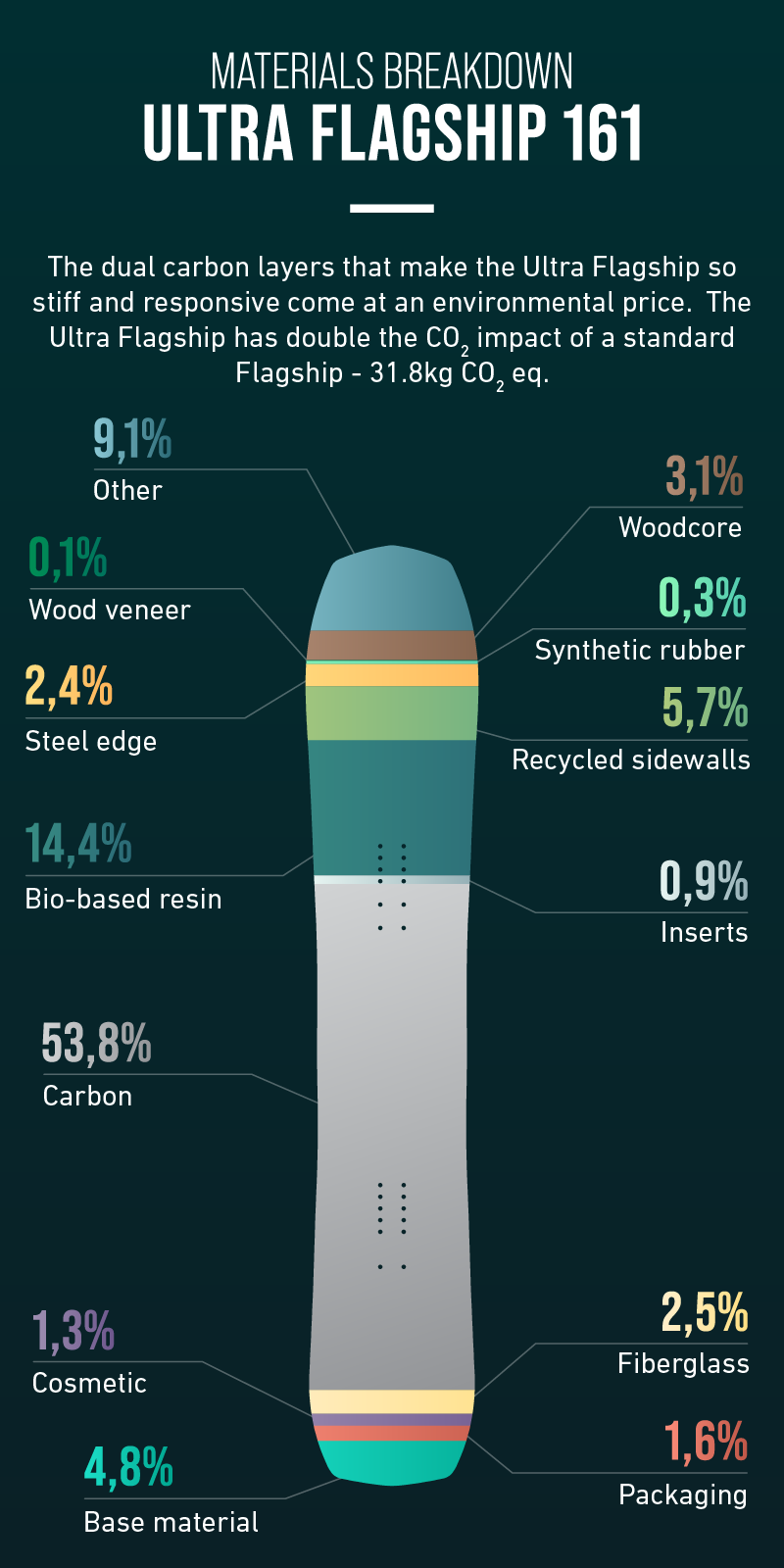
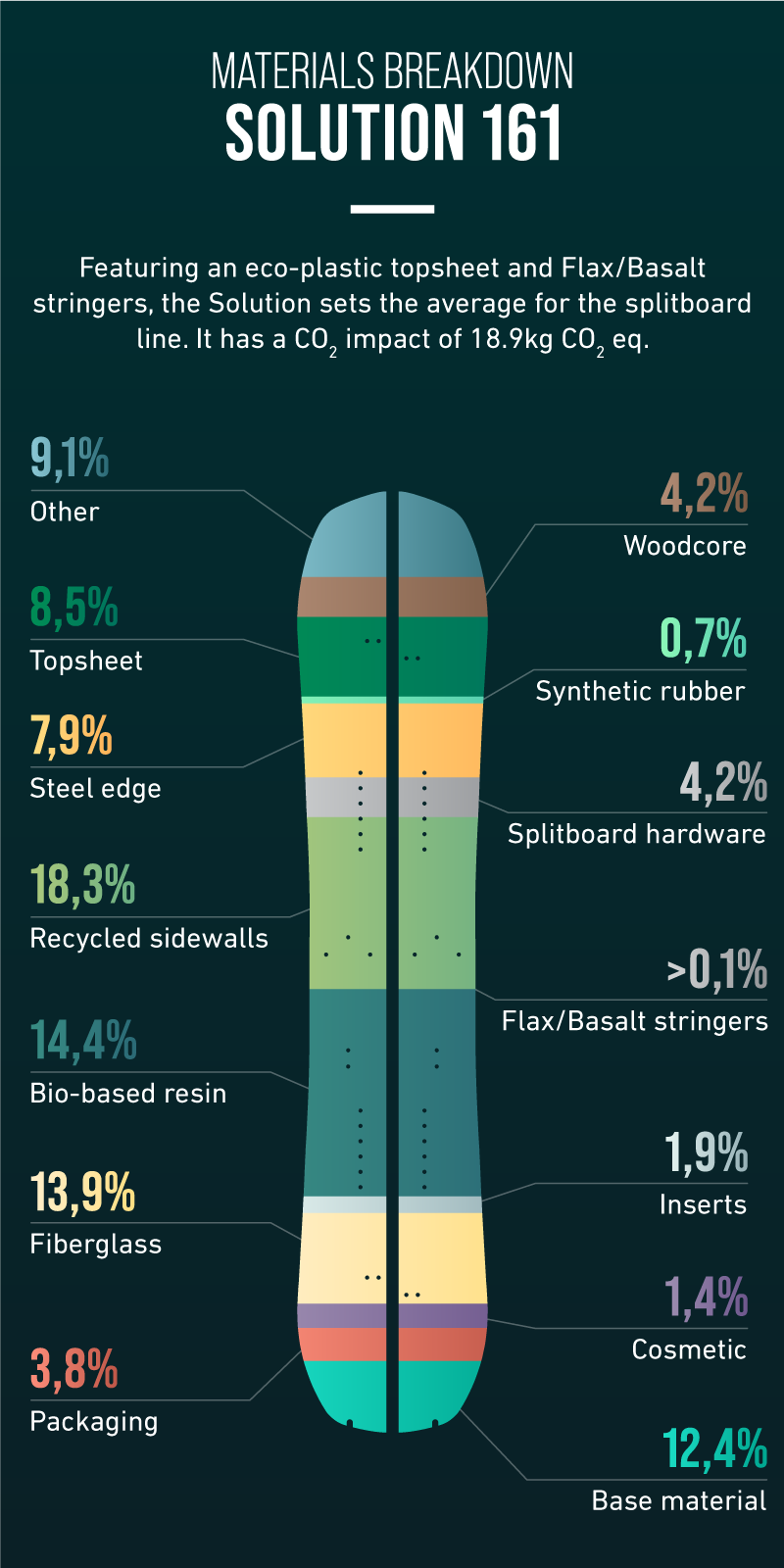
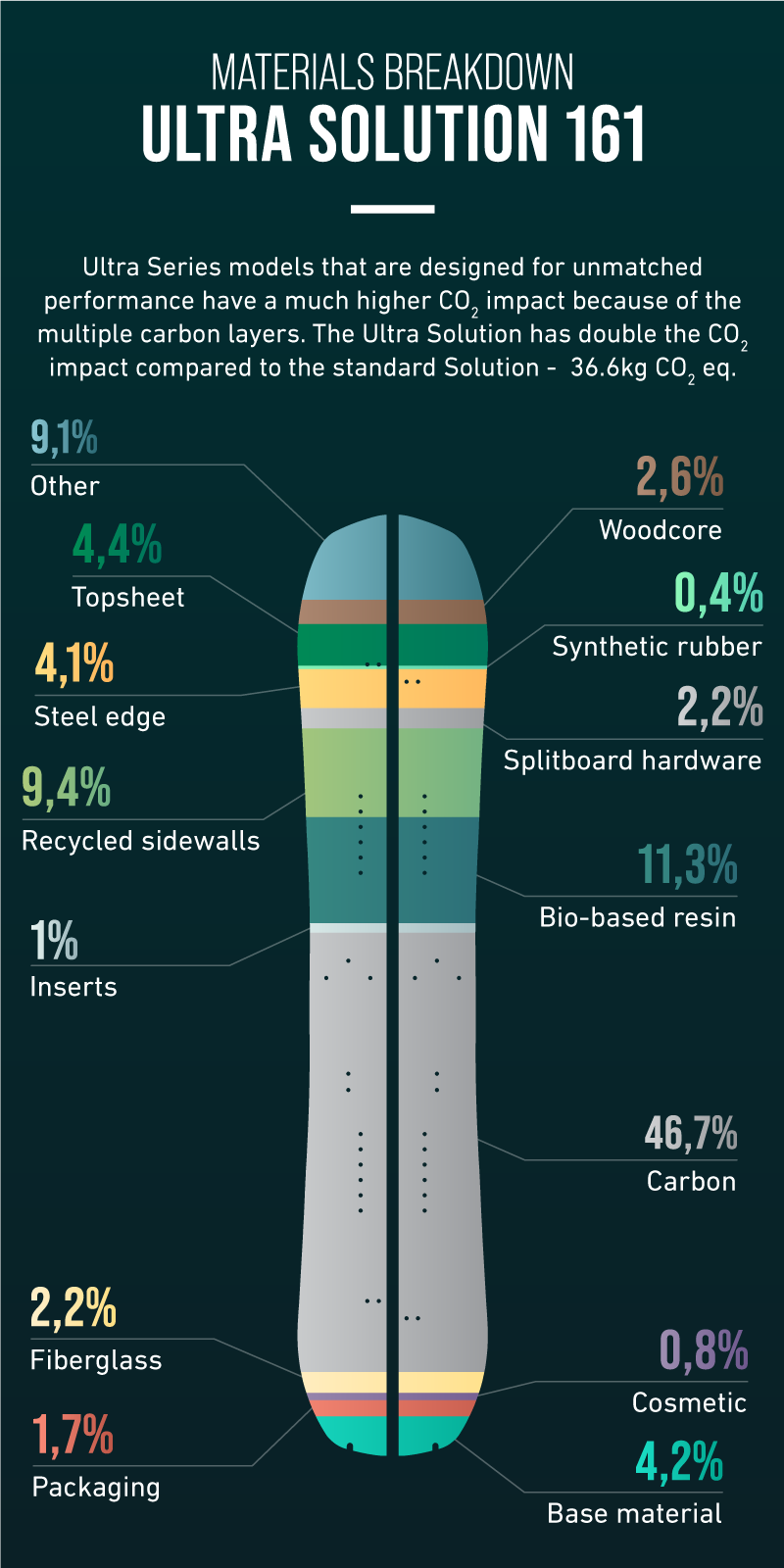
Though it may sound like the minor material differences between models drastically affects a board model’s CO2 impact, that is not actually the case. Aside from the Ultra series models, most boards have a very similar carbon footprint. This is because the mandatory materials required to build any style board - base, sidewalls, edges, fiberglass, topsheet, woodcore and epoxy - account for over 90% of a snowboard’s CO2 footprint. The materials that are unique to a specific model - reinforcements, stringers and cosmetics - represent less than 10% of a board’s CO2 footprint.
Zeroing in on the key materials found in all boards, we then assessed how much each key material contributed to a board’s overall environmental impact. Here’s another way of looking at it:
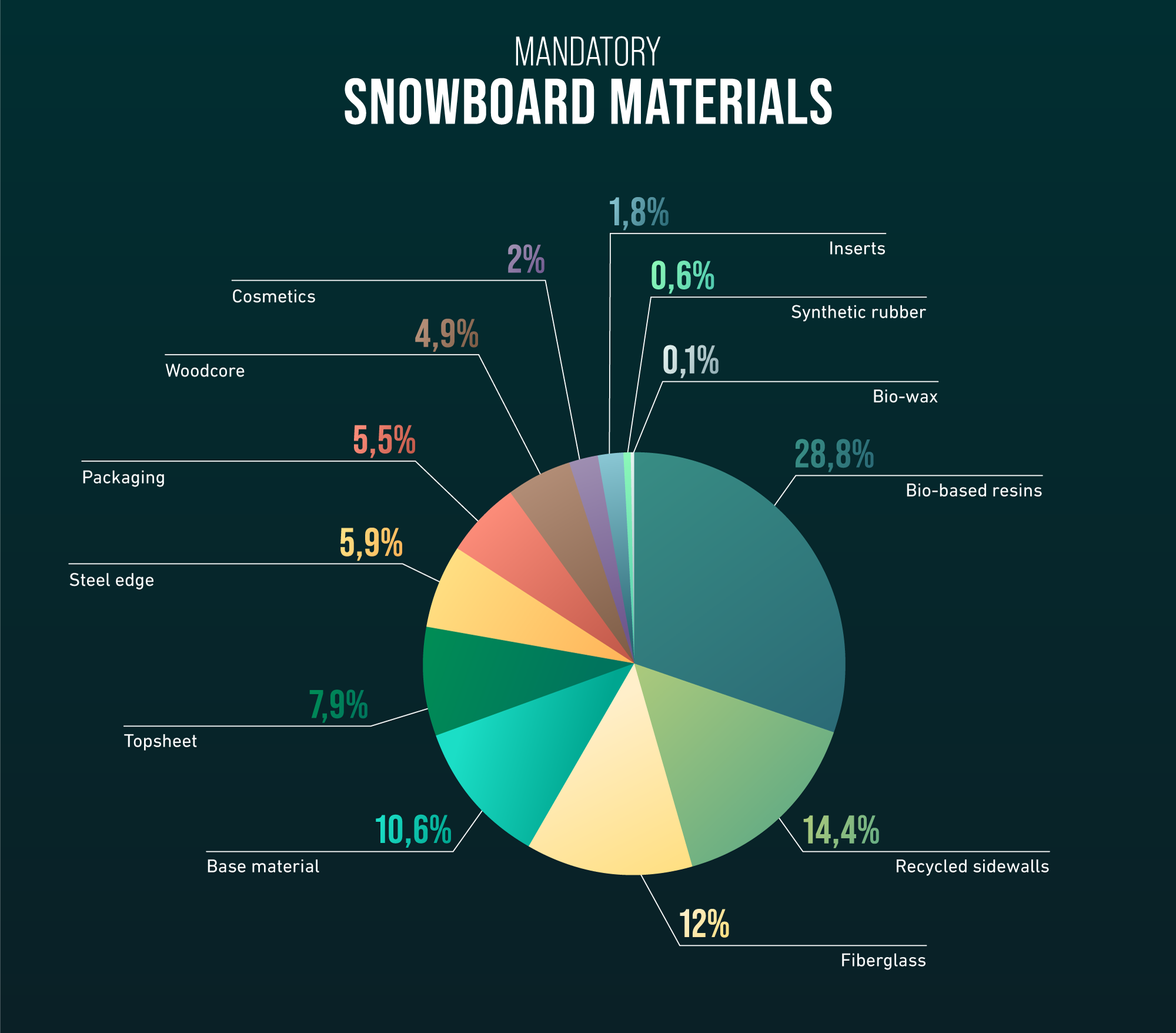

The bigger the slice of the pie in the above chart, the more important it is to keep making those materials more sustainable in future seasons. Switching from standard epoxy resin to bio-based epoxy resin in 2019 was a solid first step, but there is still major room for progress in both reducing the CO2 footprint of our bio-epoxy, and reducing the amount of it that we use.
Finding a more sustainable replacement for fiberglass is also an engineering priority and a challenge we hope will be solved as new sustainable fiber materials are developed. We will always be on the hunt for the most advanced sustainable materials available.
What is the impact of assembly?
Knowing which materials affected board sustainability the most, we then assessed the sustainability of our assembly processes. What we found is that assembling and finishing a snowboard at the SWS factory in Dubai versus almost anywhere else on Earth has a minimal impact on a board’s overall CO2 footprint compared to the impact of the materials themselves
Assembling a snowboard accounts for only 7% of a board's overall carbon footprint.
In comparison, raw materials account for 66% of a board’s overall carbon footprint.
SWS’ vast manufacturing experience, cutting edge machinery and their dedication to improving the sustainability of their facility play a huge role in why the impact of assembly is so low.
SWS’ switch to 100% solar power in May 2020 was also a massive sustainability move. Before the installation of the solar system, electricity drawn from the Dubai power grid accounted for 35% of our overall carbon footprint. By switching to all solar power, electricity now accounts for only 6% of our annual C02 impact. This amounted to a savings of 350 tons C02 eq. per year.

The factory is also thoughtfully designed and equipped to run on as little energy as possible. Most production spaces have skylight windows in the ceiling which eliminate the need for much supplemental lighting. What lights are used are all LED.
SWS’ board presses and production machinery are some of the most high tech in the industry and are tuned to offer the highest efficiency at the lowest possible energy cost. One ingenious example of this is that the boilers for the board presses are located on the roof of the factory and take full advantage of Dubai’s sunny and warm climate to assist in the heating process; thus using less energy to fill the presses.
Snowboard production uses surprisingly little water and what little water is used stays contained in closed loop systems. The two production steps that use the most water are pressing and base sanding. Both of these processes are on closed loop water systems, and require very little new water input each day because of the efficiency of SWS’ refined systems in saving water.
Water from the factory washrooms and kitchens are also collected, filtered and used for drip irrigation to water the factory garden. SWS takes water conservation very seriously and it shows by how little water usage affected the overall carbon footprint of our boards.
Manufacturing will always create waste and SWS treats the disposal and recycling of any waste products as seriously as their water and energy conservation.The factory has a strict protocol for recycling or reusing production waste whenever possible.
Wood dust generated from wood core preparation is collected and sent to authorized recyclers, and a new project is in the works to use some of the wood dust as fuel for the boilers that currently run on diesel. Progressive waste recycling programs like this are another reason why the footprint of actually assembling a snowboard is so minimal. Very little waste is created, and even less energy goes into disposing of it because so much of it is re-used.
What makes it all possible? Great people!
SWS’ ability to so effectively manage all the complex production processes used in high-volume snowboard manufacturing is not just testament to their facility. The talent and expertise of the SWS’ management and factory staff are the real reason the factory can run so efficiently. From the company owner to the engineers to the production personnel, every SWS employee is invested in making sure their production runs as smoothly and sustainably as possible.
To conscientiously support all the amazing people who help make our boards, we created a strong Code Of Conduct (CoC) document that sets guidelines for how our suppliers treat their employees. The CoC guarantees factory employees fair and safe working conditions, protects them from discrimination, and also mandates how suppliers treat the local environment around them. You can read more about our Code Of Conduct here.

The next time you strap into a Jones board we hope this information allows you to see your board in a new light. The materials the board is made of account for the majority of the carbon footprint of that snowboard, so the better you take care of those materials, and the longer you ride a board before replacing it, the more sustainable your snowboarding program will be. Reducing the quantity of any material you consume is without a doubt one of the most beneficial means of minimizing your carbon footprint.
Next up, learn about how the disposal or recycling of a retired snowboard affects its carbon footprint in part four of the ‘How Green Is Your Board?’ series.
Source Information:
This story uses data generated by Ecochain, our partner from the Netherlands who helped us analyze the life cycle and calculate the carbon footprint of a Jones snowboard. Ecochain uses the ecoinvent database and the ReCiPe calculation method for their analysis. If you have any questions about the results presented in this story, feel free to contact us at [email protected]

